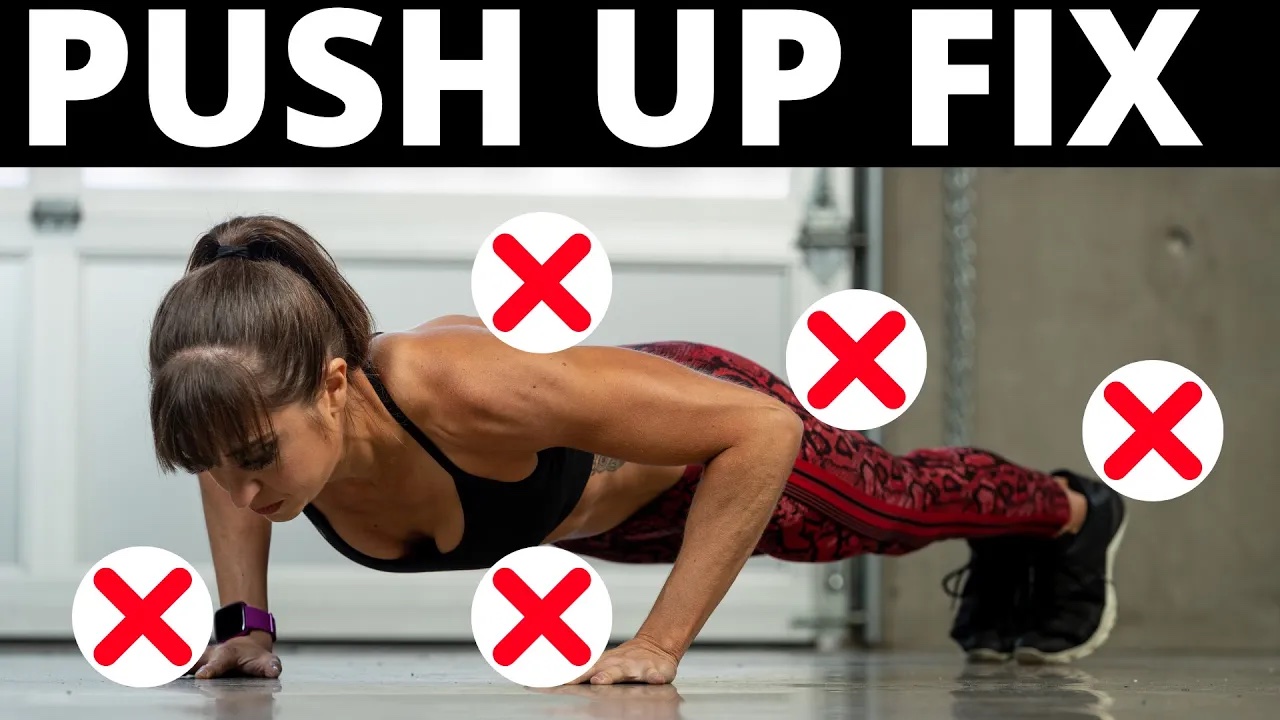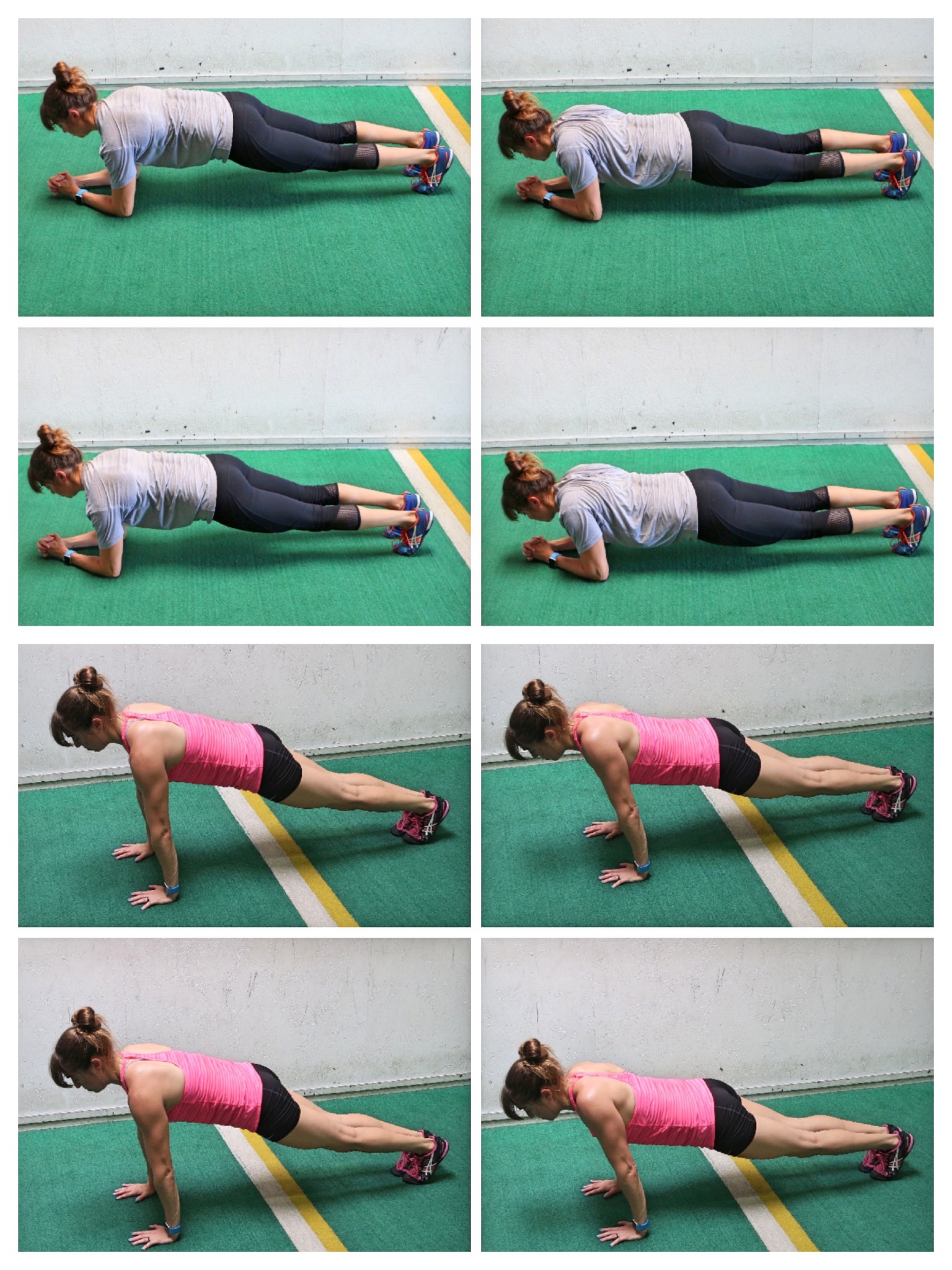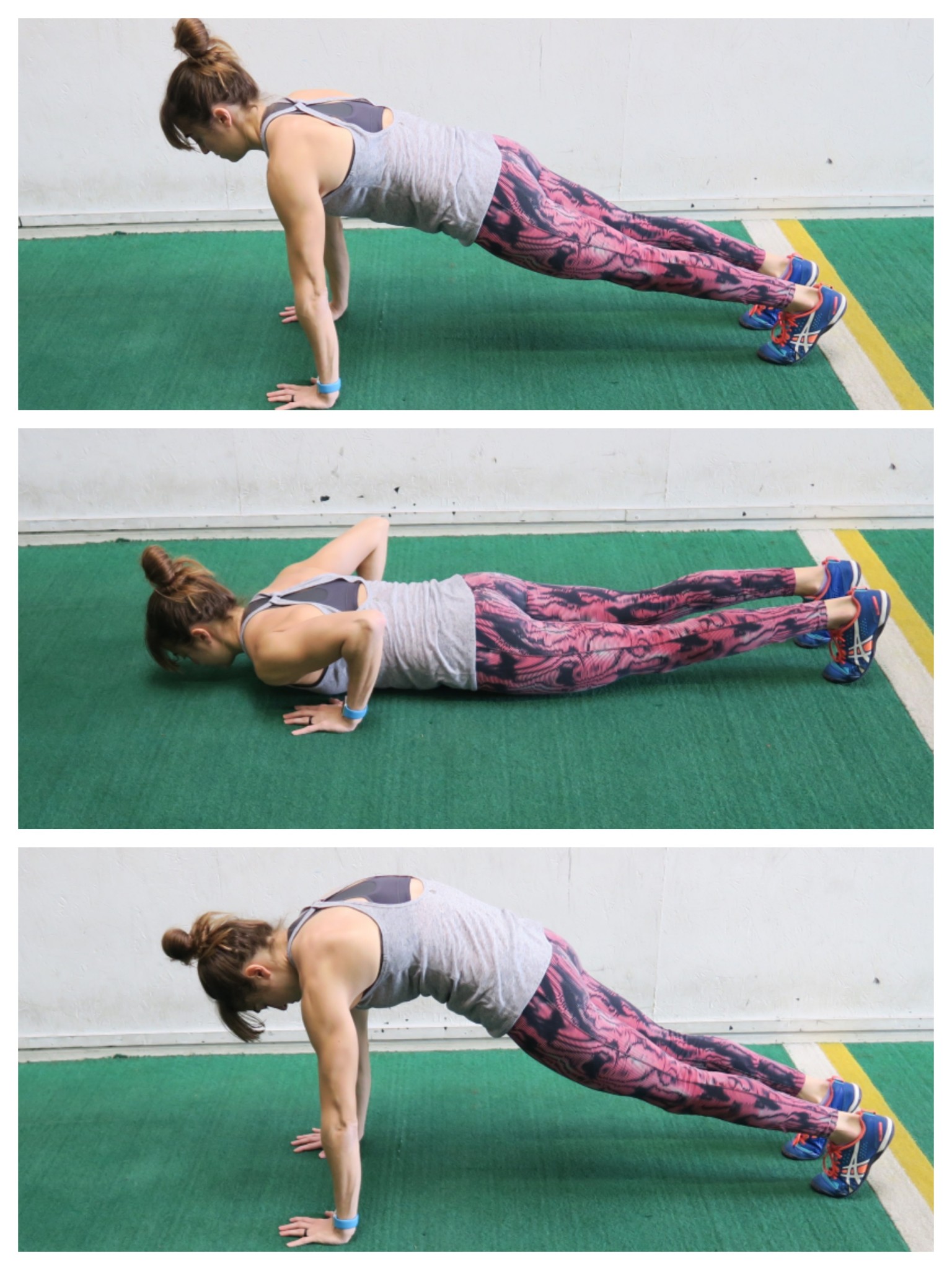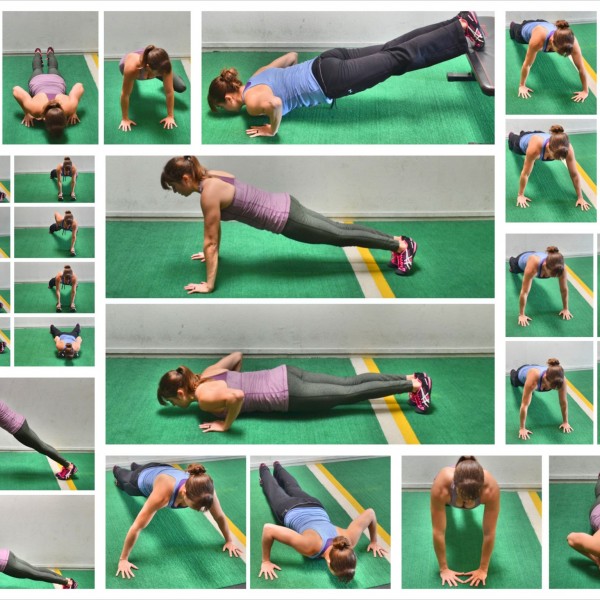
5 Tweaks To improve Your Push Up Form
Want to improve your push ups?
Then start focusing on what muscles you actually feel working during the movement.
When we get the correct muscles truly powering an exercise efficiently, we can see improvements almost instantly.
It’s not that we all of the sudden POOF got stronger…
It’s often just that we are using the correct muscles to the correct extents at the right times.
That’s why I wanted to share 5 quick tweaks to your push up form that can help you improve your push ups immediately.
These are mental cues and areas to focus on as you not only set up in the push up, but even perform the movement.
These changes help you load more efficiently and better engage those bigger muscle groups to support each other.
Not to mention these tweaks will help you avoid those common aches and pains that happen with push ups from adding up!
At the end I’ll also share a bonus tip to help you learn to make these adjustments and truly focus on what you feel working.

So let’s first start with our connection to the ground. As we need to create tension through the ground to properly activate everything.
#1: Spread Your Fingers And Grip The Ground With Your Entire Hand.
If you want to engage your chest, shoulders and triceps properly, you need to focus on your hand placement.
Too often we just set up with no thought as to the pressure we are really applying through our hands.
This not only leads to a less powerful press as we don’t fully activate our chest, but it can also lead to overload of our wrist and elbows.
So spread your fingers wide and focus on gripping the ground with every finger tip as well as your thumbs.
You want your middle fingers pointing straight ahead as well. This helps keep your shoulders in a good position.
Often we may find our hands want to turn in as our elbows flare out, and not only does this overload our wrist and elbows but it internally rotates our shoulders and can lead to us shrugging and ending up with neck or rotator cuff issues.
It also prevents us from having as strong a press because our chest can’t engage correctly and neither can our back.
So don’t just rush the set up. Focus on your hands outside your chest and that tension into the ground through your entire hand.
This intentionality in your set up and tension down into the ground will not only help you better activate your pecs and protect your upper body, but it will also set you up for success with tweak number 5 to improve the push back up to the top of the push up.
But you don’t want to only focus on your hands connection to the ground. You also want to pay attention to your feet.
Because efficiency in the tension you create from your head to your heels can help you more easily bust out those push ups.
That’s why #2 is to Drive Back Into Your Heels.
When you set up and place your hands outside your chest, you want to focus on pushing backward through your heels off the balls of your feet.
This helps you flex your quads and better creates that tension all the way up your body so you aren’t overloading your chest, shoulders and triceps.
Too often we end up pushing forward off our toes, which creates more strain and resistance on our upper body, making our press less efficient.
By driving back through your heels, you don’t add more load to your upper body and you even help yourself avoid the hip sag we often see with push ups because our core isn’t braced properly.
So push down into the ground as if pushing it away with the balls of your feet as you drive back through your heels.
And be conscious as you push back up to keep pushing back through those heels.
But it’s not just our lower body we want to be focused on with what we consider to often be a chest, shoulders and triceps move…
Which brings me to the 3rd area you want to focus on…
Your back!
#3: Focus On Your Back.
Often when we do push ups, our hands start to drift out in front of us instead of staying by our chest.
We also tend to shrug.
Daily postures can lead to this feeling more natural and “easier” with our push ups.
But this puts more strain on our shoulders and triceps and doesn’t allow us to use the strength of our chest optimally.
While it can “feel” easier it actually makes push ups harder.
It’s why we can struggle to have that power in our push ups.
To avoid this happening and protect even our neck, shoulders and elbows, we want to focus on engaging our back and even the movement of our shoulder blades as we press.
As you set up for the push up, shrug your shoulders and then pull them down hard as you set up with your hands outside your chest.
Pulling those shoulders down and locking them into place should make you feel along the sides of your back under your armpits engage.
This back engagement is key.
Even think wide chest as you set up.
Then as you lower down, you want to feel your back pull your shoulder blades toward your spine.
This engages your back and stretches your pecs to load them.
As you then push back up in the push up, you will feel your shoulder blades move apart.
But also as you press back up, you want to feel your back stay engaged to keep your shoulders from shrugging up by your ears.
All of this allows you to better optimize how you’re using your upper body to push.
And while it can feel harder to start as it is breaking what feels natural, it ultimately will allow you to use the power and strength of those bigger muscles more!
It is all about using what is meant to power the movement and using those muscles efficiently.
That’s why you also want to focus on tension in different muscles as different points.
What you focus on in your setup may change as you lower down and then especially as you move to push back up!
Ever notice you can lower back down but if you lower just a bit too far, you can’t push back up?
Finding this is holding you back from that full range of motion in your push up?
This transition and push back up, means changing what you’re focusing on to keep that clear tension throughout your body.
It’s why adjustment #4 is to Exhale And Squeeze Your Butt As You Push Back Up.
We are stronger in the eccentric portion of the push up, which is the lower down.
That’s why we can find the push back up is where we lose tension and struggle.
Often we may find our chin tucks or our hips sag and then our elbows want to really flare out.
By exhaling on that exertion to push back up, we can help yourselves create better core tension and avoid the sag to push back up as one unit.
And by squeezing our glutes we can avoid our butt wanting to push up first as well.
So when you hit what may feel like a stick point, exhale hard and squeeze your butt to control your form as you push back up.
And while the exhale and butt squeeze can help with maintaining that nice plank position, tweak number 5 can help you keep that nice upper body position and even help you continue to drive back into your heels to further reinforce that plank position.
Tweak #5 is to Push The Ground Away As You Drive Up.
Too often we just think about trying to get back up to the top of the push up which is why our butt can go back first or we find our shoulders lift as we arch our back.
We lift up in pieces.
By creating that good core tension with the exhale and butt squeeze we can then drive back up with our body moving together by focusing on pushing the ground away with our hands.
It’s why setting up with that tension to start is so key.
When you push the ground away, focus on gripping it with every part of your hand. And even think about almost trying to pull your hands together to keep those thumbs down.
The push up involves horizontal adduction of your shoulders, which engages your chest more.
So almost pretending you would fly your arms together if the ground wasn’t in the way, can help you get more chest involvement to press up.
And often as we go to push up, we come forward on our toes, losing tension.
But by focusing on pushing the ground away, we can help ourselves push back into our heels.
This reinforces that core tension and helps us keep our back engaged to further promote us using the muscles of our upper body efficiently for a powerful push back up!
Bonus Tip:
And while all of these form adjustments are amazing, it can be hard to focus on doing them when we are using a push up variation we can’t yet control.
Especially the longer we’ve been compensating and our form has been off, the harder it can be to change what has become “natural.”
So as much as we want to do a harder variation of the push up, sometimes we do have to regress to progress to start and train these changes first.
While they will help you quickly improve your push ups, do not hesitate to even modify off an incline, or higher incline, to start to build up with proper engagement.
That little step back can launch you forward faster!
Improving your movements and even feeling stronger, is partly about that efficiency of movement.
Use these cues and form tweaks to help yourself rock those push ups by getting the correct muscles working together more efficiently!
Want to improve your push ups? Here’s an amazing 30 day workout plan to help!












